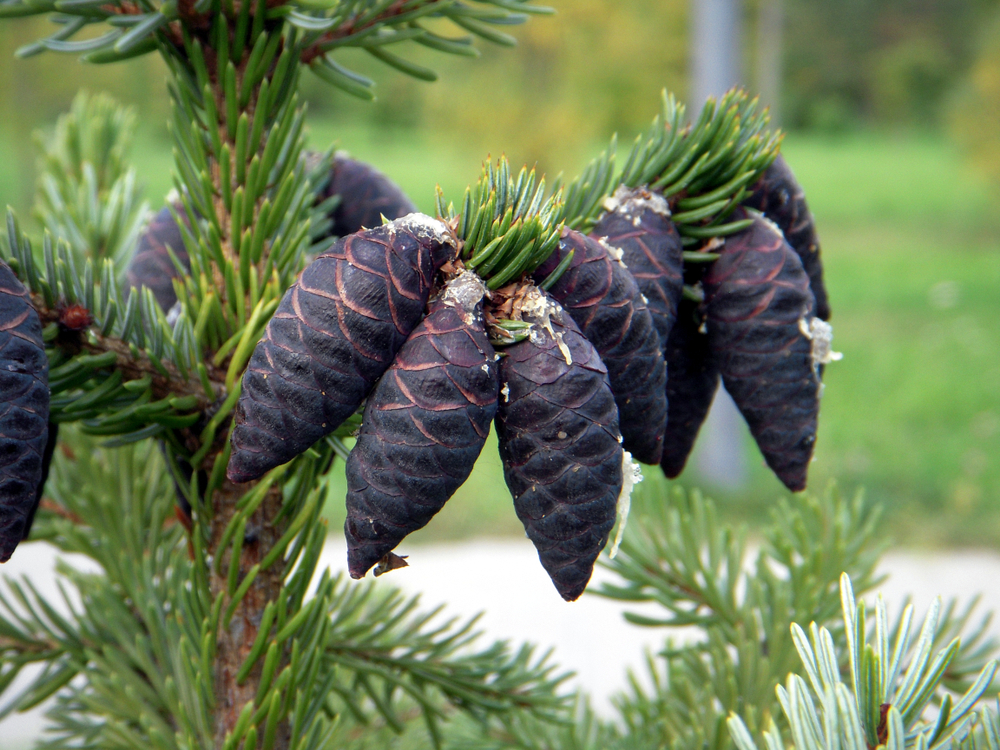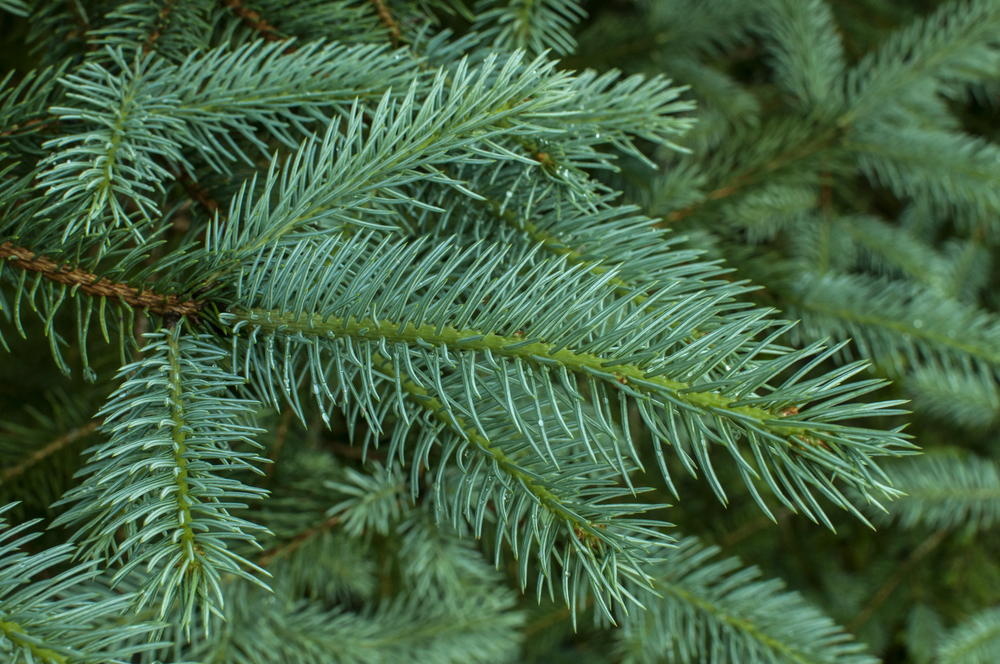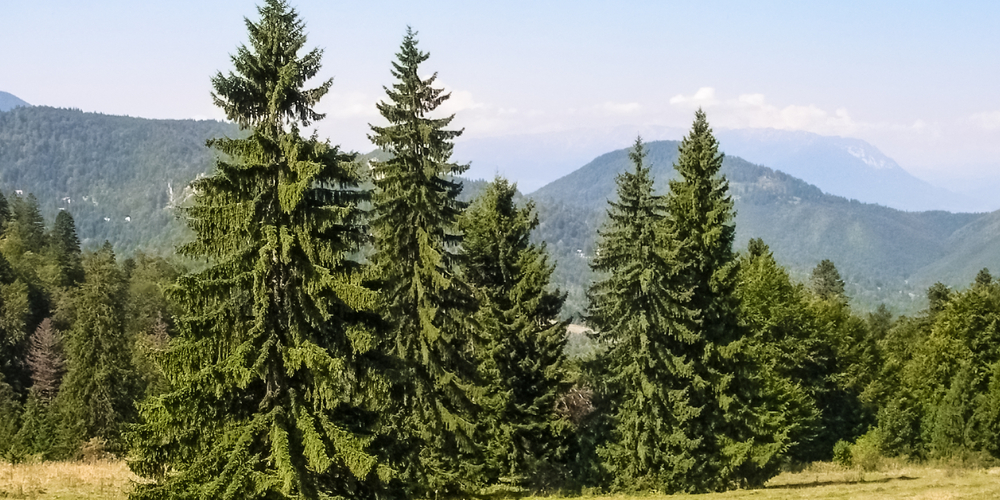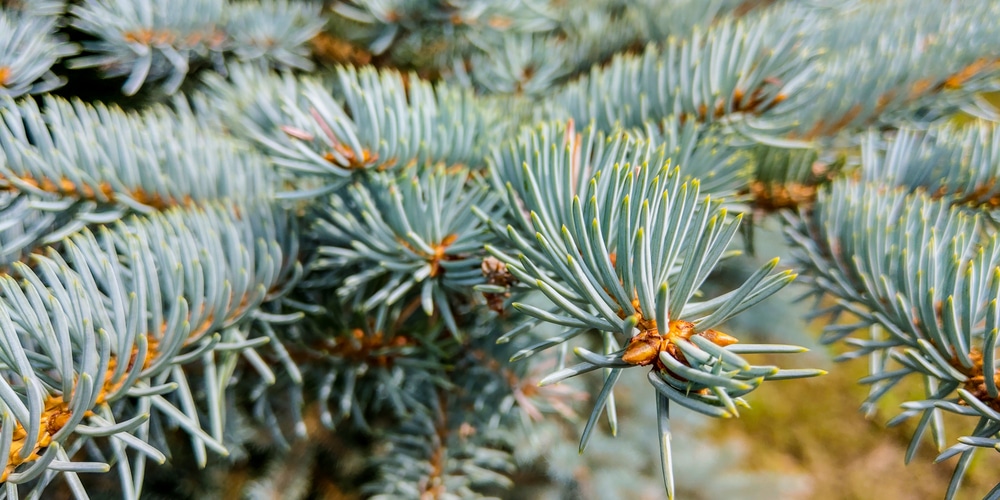The state of Michigan is a beautiful place to visit and offers a wide variety of trees and foliage to enjoy. The vast amount of natural water sources allows many plants to flourish and thrive, including several types of spruce trees. Let’s look at Spruce Trees in Michigan.
Spruce Trees in Michigan
Here are five varieties of spruce trees that are commonly found growing in Michigan:
Black Spruce
The black spruce tree, also known as picea mariana, is found in the Great Lakes region, including Michigan. These trees tend to grow more slowly the farther they are found from natural water sources and have a preference for wetter lands. Their trunk is straight, and the branches are short and upturned. They have a narrow tip, needle-like leaves, and produce the smallest pine cones of all the spruces.
Despite their preference for bog lands and swamps, the black spruce is highly adaptable and capable of surviving in higher temperatures and less drainage. With a maximum height of 30-50 feet, these trees are not big enough to be used for lumber and are often cut as Christmas trees. They can also be used to make gum or beer.
White Spruce
Reaching heights of up to 130 feet, the white spruce, also called picea glauca, is native to most of New England, Canada, and Alaska, preferring colder climates. They can also be found in the Great Lakes region in upper Michigan. Like black spruce, white spruce is also tolerant of temperatures as low as -70 F.
White spruce trees are generally dense with foliage toward the bottom of the trunk, with branches tapering off toward the top. Their wood is commonly harvested in Canada for paper and other uses and makes excellent firewood. While some people choose white spruce to be used as Christmas trees, they are not a popular option due to their pungent smell. The odor they produce is why they are sometimes called “skunk spruce” or “cat spruce.”
Norway Spruce
While not originally native to Michigan, the Norway spruce, or picea abies, has been naturalized for both ornamental and harvesting purposes. They are one of the largest and fastest growing of the evergreen family, with the tallest on the record standing at 204 feet tall.
Unlike the black and white spruce trees, the Norway spruce favors well-drained soil and does not adapt well to wetlands. With a thick trunk and narrow tip, the branches of the Norway spruce often droop downward, persisting nearly to the ground. It is drought and low-light resistant and produces the largest pinecones of all spruce.
Serbian Spruce
Picea omorika, or Serbian spruce, is primarily planted for ornamental purposes in the US. Originating from Serbia, this medium-sized evergreen is commonly given as a gift in its dwarf form for gardens or yards.
The Serbian spruce can grow in various soils, from clay to moist loam. Its needles are blue-green and tend to point upward toward the tip of the tree, which comes to a point. Its slow growth makes it a cute indoor decoration, and It can also be found in parks or used as a Christmas tree.
Blue Spruce
The blue spruce, also called picea pungens, is the state tree for Colorado and sometimes goes by the name Colorado blue spruce. While native to North America, the blue spruce is not native to Michigan but has been widely distributed for its beauty. They are relatively adaptable and drought resistant, though they prefer cooler temperatures and well-drained soil.
Though it can grow up to 75 feet in the wild, cultivated blue spruce trees usually max at around 40-48 feet in parks and gardens. This robust tree is resistant to heavy winds, frost, and harsh winters. They have dense foliage, making them an excellent privacy break in yards and offering protection from wind and snow.
Conclusion
Spruce trees in Michigan are plentiful. While some are native to the area and thrive there naturally thanks to plenty of natural water resources, others are transported and planted for their beauty. From lumber to holiday decor, people reap many benefits from these often majestic evergreens.



